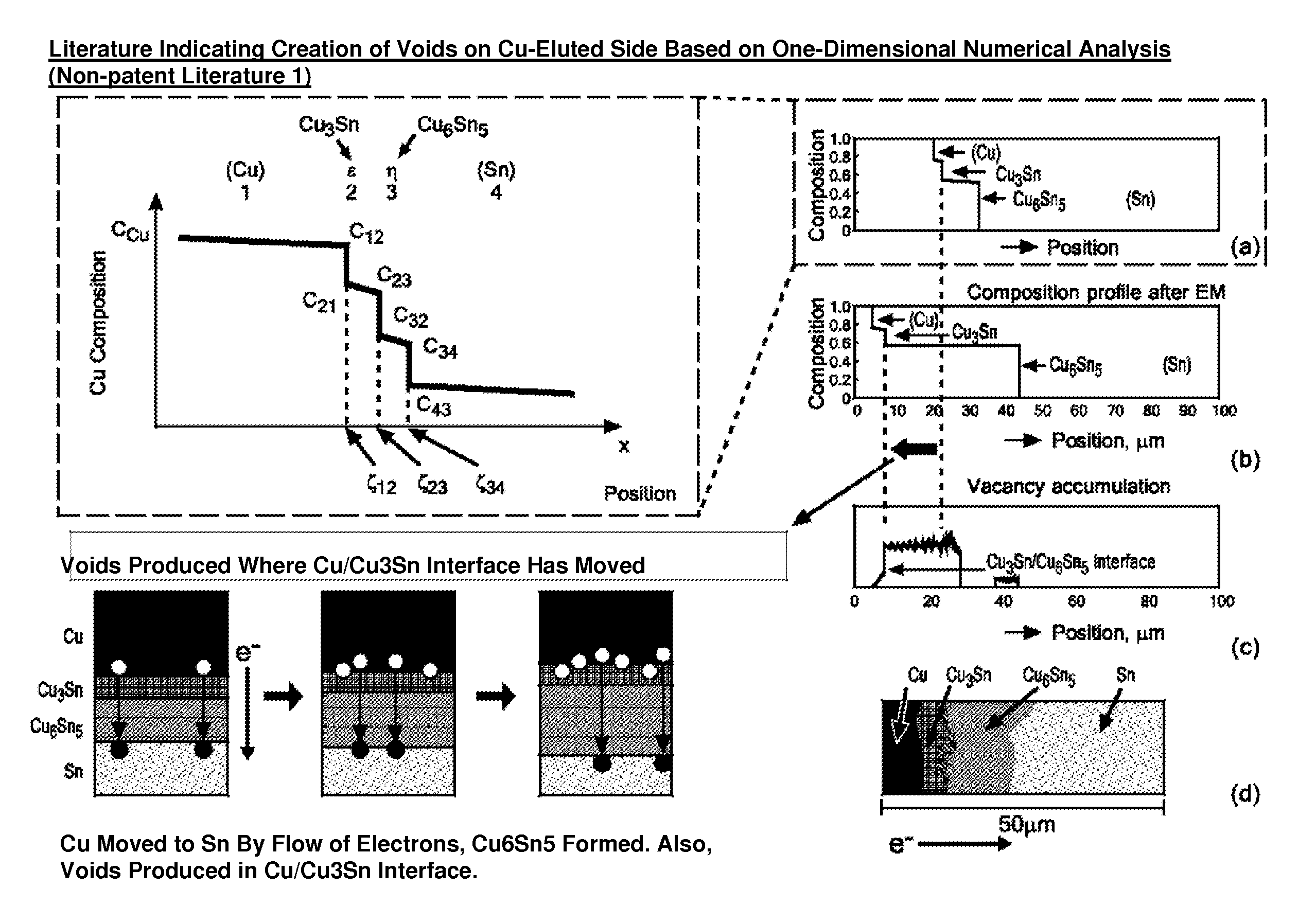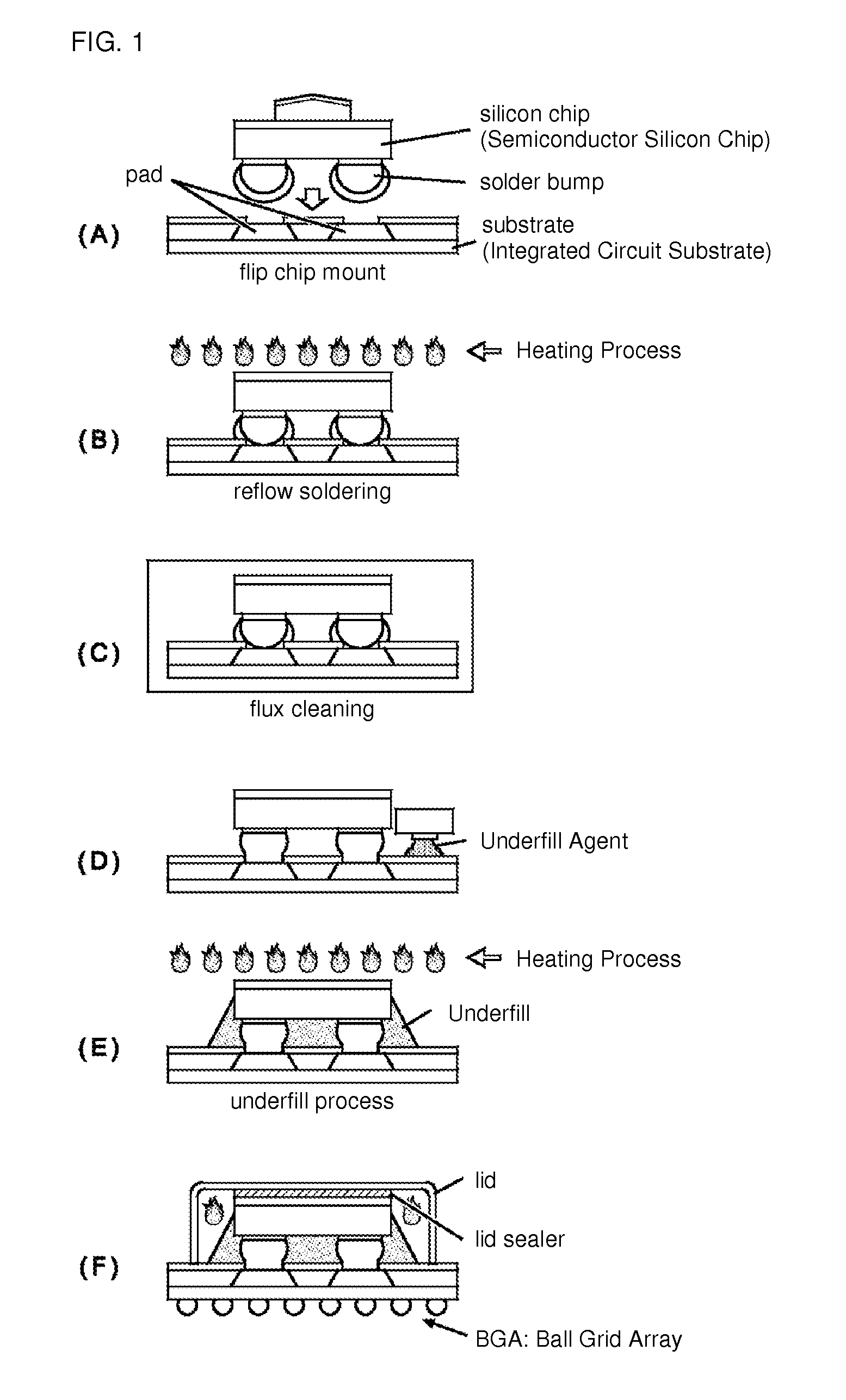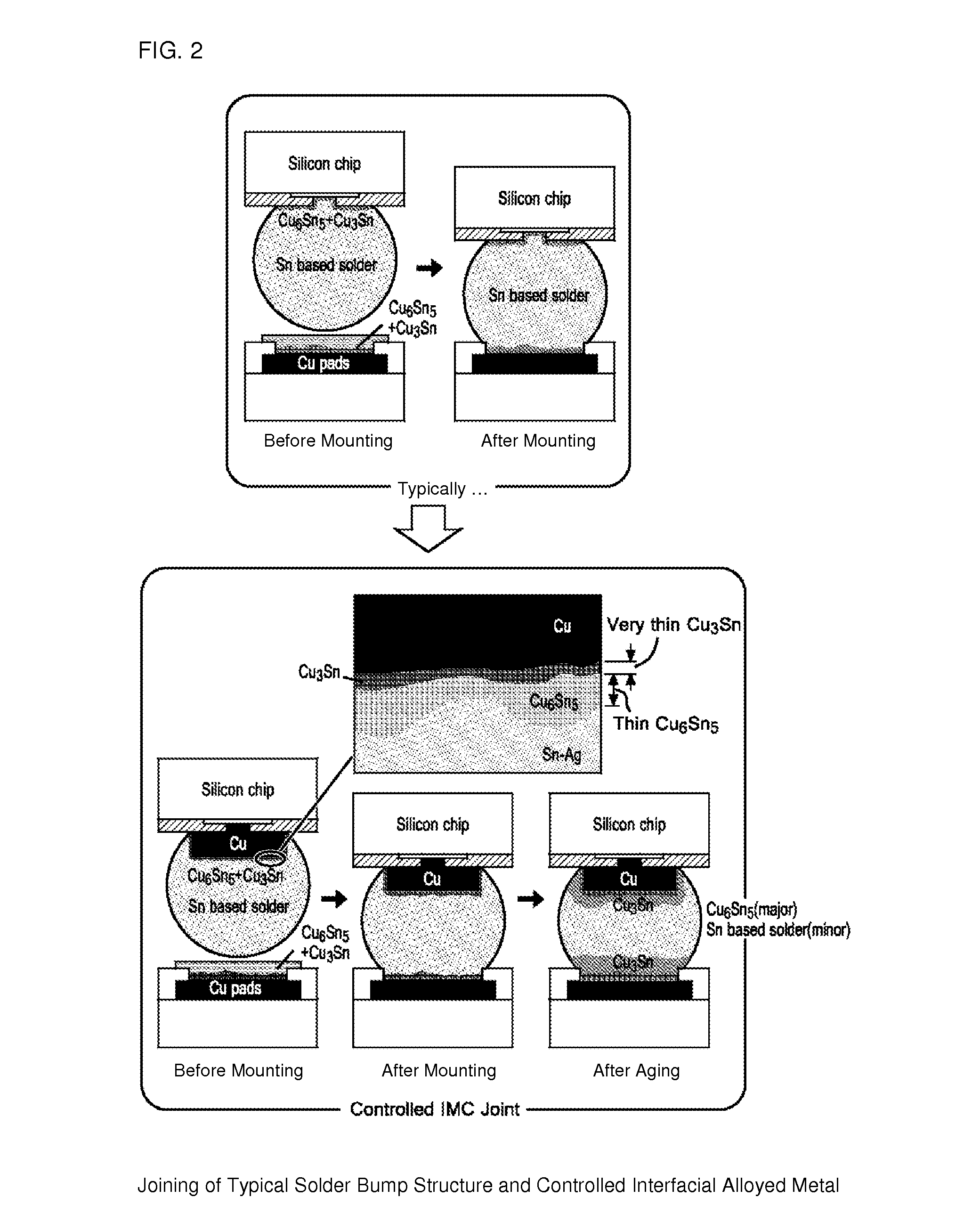Interfacial alloy layer for improving electromigration (EM) resistance in solder joints
a technology of interfacial alloy and solder joints, which is applied in the direction of semiconductor devices, semiconductor/solid-state device details, electrical apparatus, etc., can solve the problems of device completely inoperable, portion of the circuit becomes disconnected, and the effect of increasing the resistance of em
- Summary
- Abstract
- Description
- Claims
- Application Information
AI Technical Summary
Benefits of technology
Problems solved by technology
Method used
Image
Examples
Embodiment Construction
[0041]FIG. 1 is a diagram used to explain the configuration of a typical semiconductor package, and a method for manufacturing this package.
[0042]In the manufacture of a semiconductor package with multiple terminals, flip chips, including the C4 method, have gradually been adopted as the mounting method in place of conventional wire bonding.
[0043]The C4 method is an abbreviation for the controlled collapse chip connection method. Here, the expression C4 is derived from the first letter “C” in each of the four words.
[0044]Hump-shaped conductive protrusions called bumps are formed on the electrodes of a wafer for bonding to a substrate.
[0045]The use of this method makes a reduced mounting area and a smaller product possible. Because the wiring in the semiconductor is also shorter, the electrical characteristics are improved.
[0046]First, as shown in FIG. 1 (A), hump-shaped conductive protrusions called solder bumps are formed on a silicon chip (semiconductor silicon chip).
[0047]A solde...
PUM
| Property | Measurement | Unit |
|---|---|---|
| thickness | aaaaa | aaaaa |
| temperature | aaaaa | aaaaa |
| diameter | aaaaa | aaaaa |
Abstract
Description
Claims
Application Information
 Login to View More
Login to View More - R&D
- Intellectual Property
- Life Sciences
- Materials
- Tech Scout
- Unparalleled Data Quality
- Higher Quality Content
- 60% Fewer Hallucinations
Browse by: Latest US Patents, China's latest patents, Technical Efficacy Thesaurus, Application Domain, Technology Topic, Popular Technical Reports.
© 2025 PatSnap. All rights reserved.Legal|Privacy policy|Modern Slavery Act Transparency Statement|Sitemap|About US| Contact US: help@patsnap.com



